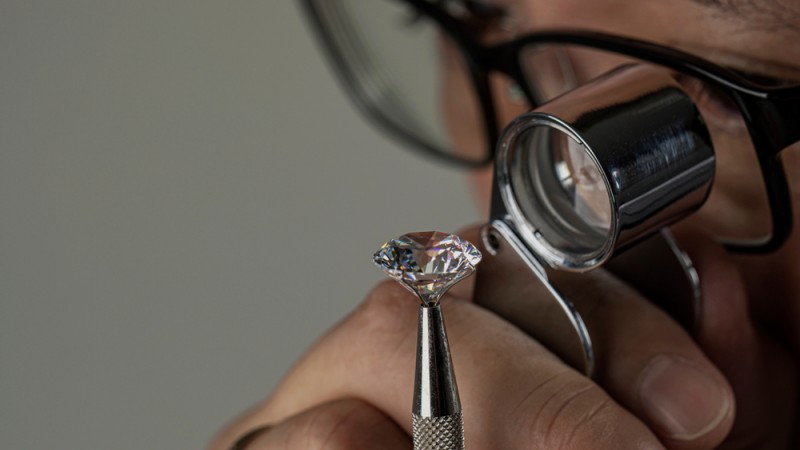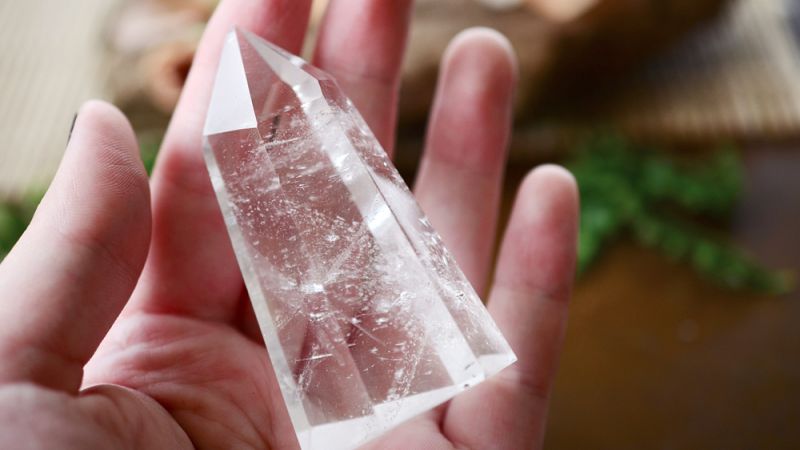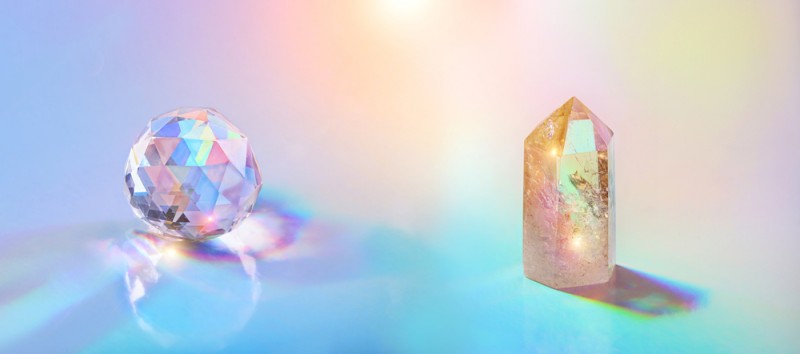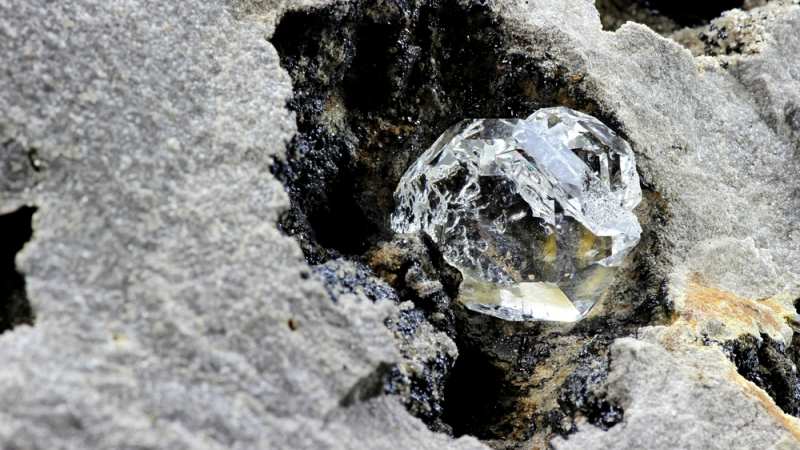We are all familiar with diamonds and quartz, but the intriguing question is: what similarities and differences exist between these two gemstones? Both are highly popular for distinct reasons, and today we will delve into their unique qualities.
The diamond versus quartz debate is widely known, and many are eager to uncover the true disparities and how they compare side by side. There are numerous questions surrounding this topic that demand answers. So, without delay, let’s explore the hidden characteristics of these two gemstones.
DESIGN YOUR OWN ENGAGEMENT RING: START WITH A SETTING OR START WITH A DIAMOND. IT’S REALLY UP TO YOU!

How To Recognize A Diamond
Diamonds are renowned as one of the most famous and valuable gemstones in the world. However, their recognition is not always easy, especially for the untrained eye. It is disconcerting to know that there are individuals who make a living by selling fake diamonds that can deceive even knowledgeable diamond experts with their impeccable imitations.
To address this concern, we aim to guide you on how to differentiate real diamonds from imitations and ensure that you are not being sold a mere replica.
Quartz, on the other hand, is also widely available and sold in large quantities. We will soon discuss how to identify quartz as well.
One key characteristic that sets natural diamonds apart from fakes is their unparalleled hardness, which cannot be replicated, no matter how skilled the fraudsters may be. The most reliable method of distinguishing a diamond from other materials or stones is by assessing its performance on the Mohs scale of hardness. Remember, diamonds are the only gemstones that achieve a perfect 10 on this scale, signifying their unmatched hardness.
It is important to note that in most cases, you will encounter polished and cut diamonds rather than raw and uncut ones. However, since replicas are meticulously shaped and processed, this visual observation alone may not provide significant insight.
This is where technology comes to our aid. Diamond testers can be employed to authenticate the authenticity of diamonds and determine whether the diamond before you is real or fake. However, it’s worth mentioning that diamond testers cannot differentiate between lab-grown diamonds and naturally occurring diamonds.
Nevertheless, the most effective way to distinguish genuine diamonds from fakes and other gemstones is to have a diamond tester on hand or perform a hardness test.

How To Recognize Quartz
Quartz has experienced a surge in popularity in recent years. It has captivated individuals interested in gemstones for various reasons, including spiritual and decorative purposes. Quartz crystals have garnered significant attention from enthusiasts.
The distinct color of quartz varies depending on the specific type. The most well-known variant is rose quartz, characterized by its enchanting pink hue, which is challenging to replicate. Other varieties of quartz, such as white, citrine yellow, and amethyst purple, also exist, although they may not enjoy the same level of popularity as rose quartz.
These gemstones possess an appearance and texture that exude elegance, but their price tags do not compare to diamonds. A 1-carat rose quartz typically costs around $100, which, although not inexpensive, pales in comparison to the price range of 1-carat diamonds. The price disparity can amount to hundreds or even thousands of dollars.
Apart from the price differential, there are several other factors that distinguish quartz from diamonds. Firstly, their chemical composition sets them apart. Diamonds consist of pure carbon, while quartz comprises oxygen and silicon.
Quartz can be identified by its characteristic glassy luster, a rating of 7 on the Mohs scale of hardness, and the presence of white sediment on its surface. However, one notable distinction between quartz and diamonds, as well as other crystals in general, lies in their cutting styles.
Quartz is often left uncut, showcasing its raw beauty as a decorative piece, or it is shaped in specific forms that differ from diamond cuts. While there are rare instances where quartz is cut similarly to diamonds, the majority of quartz gemstones possess unique shapes that differ significantly from diamonds.

Diamond & Quartz – Similarities
Certainly, diamonds and quartz have both similarities and differences. However, let’s focus on their similarities first, as some may not initially perceive them to be similar, but they would be mistaken.
The only type of quartz that might be mistaken for a diamond, or have any resemblance to a diamond, is clear quartz. This semi-popular crystal can be found in specialty shops that specialize in gemstones.
The most significant similarity between clear quartz and diamonds lies in their appearance. Both stones are transparent and can occasionally be confused for one another, although such instances are rare.
It’s important to note that the clarity of the diamond and its specific appearance, including color and clarity levels, can differentiate it from clear quartz.
However, when considering regular diamonds and regular clear quartz, at first glance, there may be no apparent differences, especially for those with limited knowledge of gemstones.
Both stones possess a glossy appearance and reflect light in similar patterns. This is generally due to the fact that different diamond cuts produce varying light reflections. If quartz is cut in a similar manner to diamonds, it becomes even more challenging to differentiate the two.
Unfortunately, these similarities are limited to the initial impression. Diamonds and quartz are fundamentally different gemstones from each other.
With that being said, let’s now delve into some notable differences between diamonds and quartz.

Diamond & Quartz – Differences
When it comes to differences, there are numerous aspects that distinguish clear quartz and diamonds, far outnumbering their similarities.
Firstly, let’s discuss hardness. While hardness may not be visible to the naked eye, it can be determined through testing. Quartz is strong and durable, but it is relatively brittle, similar to diamonds. However, diamonds surpass quartz in terms of hardness.
Diamonds hold the distinction of being the only mineral to achieve a perfect 10 on the Mohs scale of mineral hardness, making them the hardest substance on Earth. If a material resembles a diamond but registers a hardness rating lower than 10, it is not a diamond but possibly quartz. Quartz, on the other hand, receives a respectable rating of 7 on the Mohs scale, indicating a notable difference in hardness.
Moreover, their chemical compositions differ significantly. Diamonds form through a process involving carbon subjected to immense heat and pressure, while quartz has an entirely distinct origin. Quartz emerges as lava cools and solidifies, undergoing a delicate transformation. Although not uncommon in nature, this process is not easily observable.
The contrasting paths these gemstones take to become what they are exemplify their divergence, akin to comparing apples and oranges.
From an aesthetic perspective, diamonds and quartz also possess distinguishing features. Both gemstones exhibit variations in color, shape, and size. However, diamonds tend to exhibit a greater degree of visual similarity among one another.
Quartz, on the other hand, can display a broad spectrum of colors, ranging from milky white to transparent. Therefore, if a gemstone is cut similarly to a diamond but showcases vibrant pink or purple hues, it is likely to be quartz.

Which One Is More Valuable?
We have discussed the price disparity between quartz and diamonds, with quartz generally priced at around $100 per carat, which, while not inexpensive, is still significantly more affordable compared to diamonds.
When it comes to diamonds, their price can vary based on several factors, with size being the most influential factor. Size has a major impact on diamond prices.
Additionally, clarity, color, and cut are other crucial factors that heavily influence the price of diamonds. These aspects play a significant role in determining the value of diamonds.
On the other hand, the price of quartz is influenced by factors such as the cut, size, weight, and color. However, the cut of quartz does not carry as much weight in determining its price, as quartz is often left in its natural shape due to its distinctive appearance.
While the cut of a diamond can lead to a substantial price difference, ranging from a few thousand dollars to over $10,000, the cut of quartz does not have a significant impact on its price.
Size is important for both gemstones. Diamonds are generally priced at a higher rate per carat compared to quartz. However, larger pieces of quartz can still command a significant price, similar to diamonds. The difference lies in the fact that for the same price, you can acquire a considerably larger quantity of quartz compared to diamonds.
Color is another factor that affects the price of both diamonds and quartz. Certain diamonds, such as yellow diamonds, are highly valued for their color, and their prices can be substantially higher. Similarly, the price of quartz can also increase when it exhibits specific, often rarer or more sought-after colors.

Summary
In conclusion, we have covered a lot of information about diamonds and quartz, and it’s time to summarize what we have learned today.
First and foremost, both diamonds and quartz hold significant value and have a high demand in the market.
While there may be some instances where they resemble each other, the truth is they are fundamentally different in various aspects. They differ in terms of hardness, characteristics, price, and formation process. From these perspectives, diamonds and quartz are distinct from one another.
However, the difference in value does not necessarily imply that one is more precious or valuable than the other. People have different preferences and tastes, and there are those who hold quartz in high regard, considering it more valuable to them than diamonds. The worth of a gemstone is subjective and can vary based on individual perspectives.
Therefore, in the comparison of diamond vs. quartz, there are no winners or losers. Both gemstones hold their own allure and have a significant place in the market, catering to the diverse preferences and desires of individuals.


